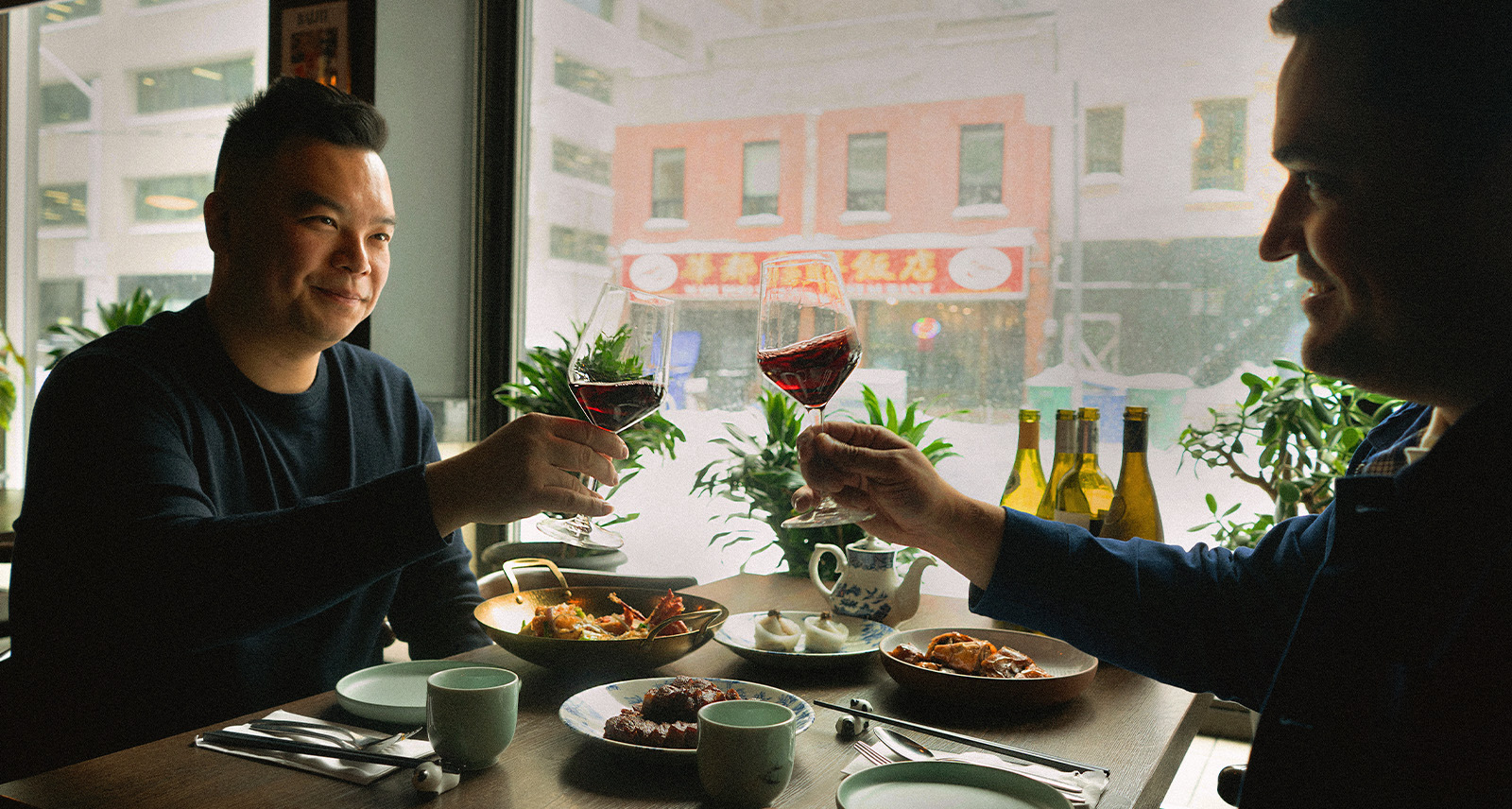Toronto Restauranteur & Sommelier on Pairing Wine with Diverse Cuisines
Mark Anthony x SHARP
A new wave of sommeliers and restauranteurs are rewriting the rules and proving that the right wine bottle can complement the complex flavours of cuisines from all over the world. Among them is Colin Li, owner of the long-running Chinese restaurant Hong Shing, and Marco Thompson, general manager and sommelier at the Michelin-starred Osteria Giulia. The two sat down to discuss their respective careers in Toronto, the changing role of wine in Chinese dining, and — most importantly — to put some wine pairings to the test. Their tasting lineup included Friuli Pinot Grigio, Bourgogne Chardonnay, La Fiole du Pape, and Le Volte dell’Ornellaia 2021, each poured alongside a signature dish from Hong Shing’s menu.

The Attems Pinot Grigio Friuli sliced through the richness of Hong Shing’s ginger scallion lobster, acting as the perfect palate cleanser. The Latour Chardonnay Bourgogne, with its subtle nuttiness, played beautifully with the black truffle garnish on steamed vegetable dumplings. Meanwhile, the full-bodied La Fiole Du Pape Châteauneuf-du-Pape stood up to the caramelized edges of BBQ pork, and the fruit-forward Le Volte dell’Ornellaia 2021 was an effortless match for 72-hour roasted duck. With each pairing, Li and Thompson found more common ground between their time-honoured practices.
Colin: I’m so excited to have you here to try some of my food. Thank you. What we have here to start is our dumplings. I’ve noticed that in many places, especially Chinese restaurants, everyone has their own spin on dumplings, but this one is our vegetarian take on it, because I noticed there [are] not many vegetarian dumplings out there. We use black truffle, carrot, celery, and water chestnuts, fold it all into the dumping, steam it, and put a little bit of black truffle paste on top.
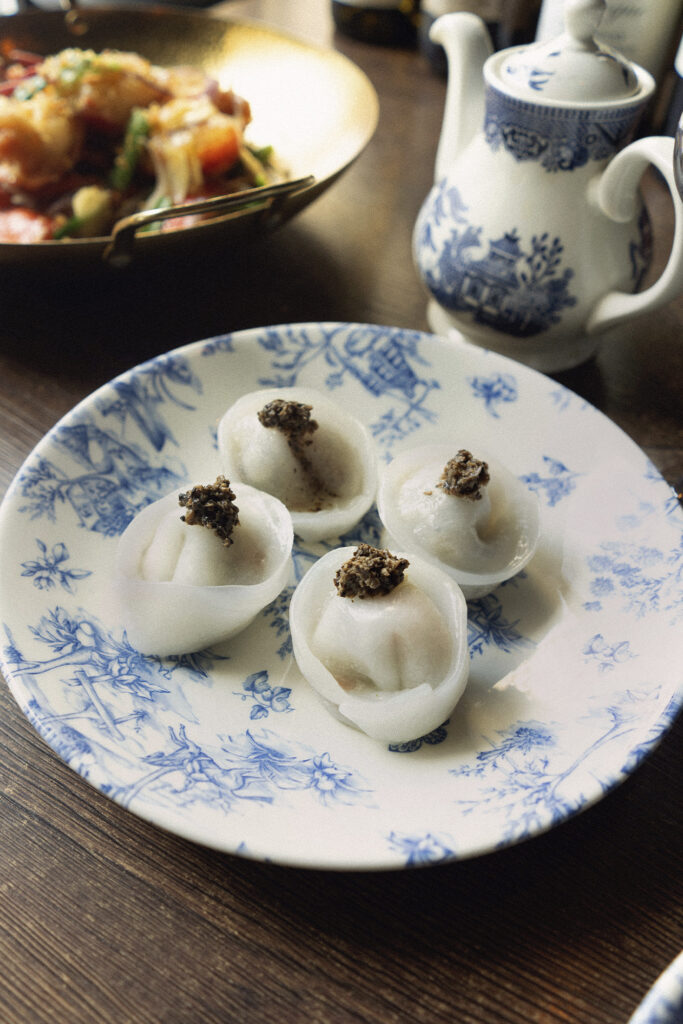

Over here is a Cantonese style roasted duck. My family is from Guangzhou, which is in the southern part of China. That’s where dim sum is originated, and that’s actually where Cantonese barbecue originated as well. We dry-age the duck overnight, marinate it, rinse it, then we roast it. So, it’s a two-day process. Same thing with the barbecue pork. We use pork belly marinated with 11 different spices for at least 48 hours, and then we roast it as well.
One of our best sellers at Hong Shing are these ginger scallion lobsters. Once it’s fried, we toss it with the aromatics. The Holy Trinity is what we call it — ginger, green scallions, and garlic with little bit of oyster sauce reduction added into it. It’s just super sweet, super savory.
Marco: Wow, it all looks amazing.
“Everything I do is about representing Italian culture and sharing it with others. Wine became an easy way to do that because it allows you to take people on a journey.”
Marco Thompson
Colin: Thank you. And what do you have for us today?
Marco: Today we have a little bit of a selection of wines from around the world. We have this beautiful Attems Pinot Grigio Friuli. Friuli is one of my preferred wine areas in Italy for white wines — it’s going to give you a richer body, it’s got great acidity, and beautiful tropical flavours. It’s definitely more of an opulent Pinot Grigio.
Then, we’re going to move into a beautiful Chardonnay from Bourgogne made by Latour. It’s a famous, classic house. You can’t go wrong with anything they do. It’s going to give us a little bit more body and a little bit more richness compared to the Pinot that we’re going to start with.
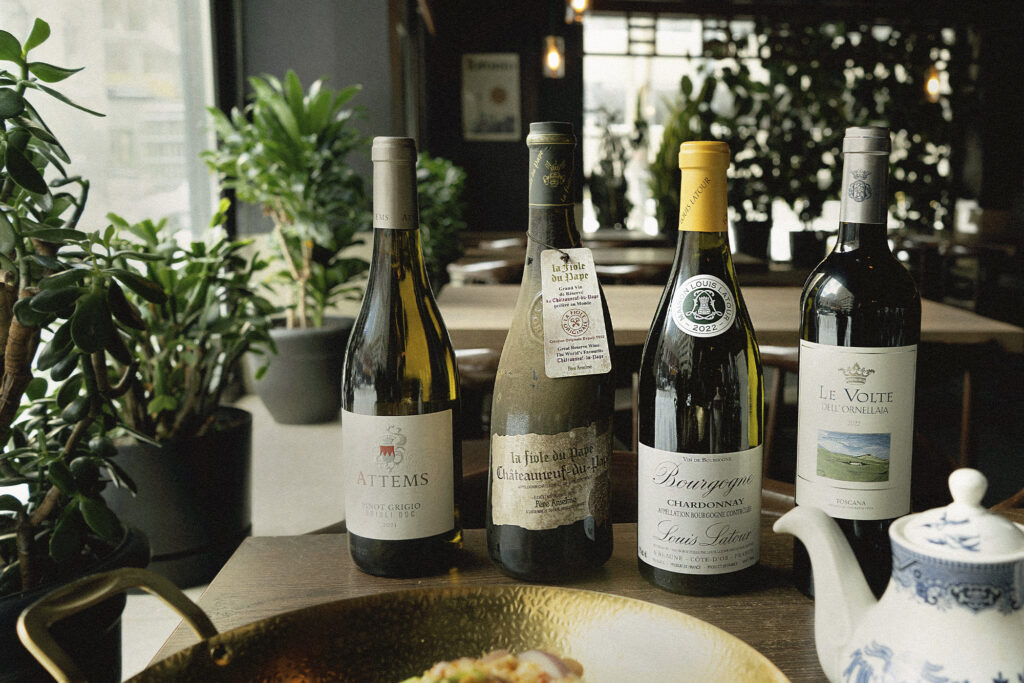
After, we have this beautiful Châteauneuf-du-Pape from La Fiole. This is everyone’s favourite. I think it’s the kind of iconic bottle that, the second you see it on the shelf, you’re like, “Oh, I know that!” It’s going to give us a nice full-bodied, dark fruit-forward wine.
And lastly, we have our beautiful blend from Le Volte dell’Ornellaia. It’s going to be lighter than what you expect for the blend of grapes that’s in it. It’s got this beautiful acidity that goes through it with these soft, silky tannins that will match really well with that roasted duck.
“The easiest wine pairing rule to follow is: what grows together, goes together.”
Marco Thompson
Colin: Thank you so much for bringing these in today. I’m excited to have them with what our team made today. What first got you into wines?
Marco: It came from my parents growing up. We always did all the parties at my house and hosted everybody. I think that’s what brought me into restaurants because, at the end of the day, you’re essentially hosting people. Everything I do is about representing Italian culture and sharing it with others. Wine became an easy way to do that because it allows you to take people on a journey.
I love how you fit traditional, old-school cuisine into your restaurant but with such a new vibe and new ideas.
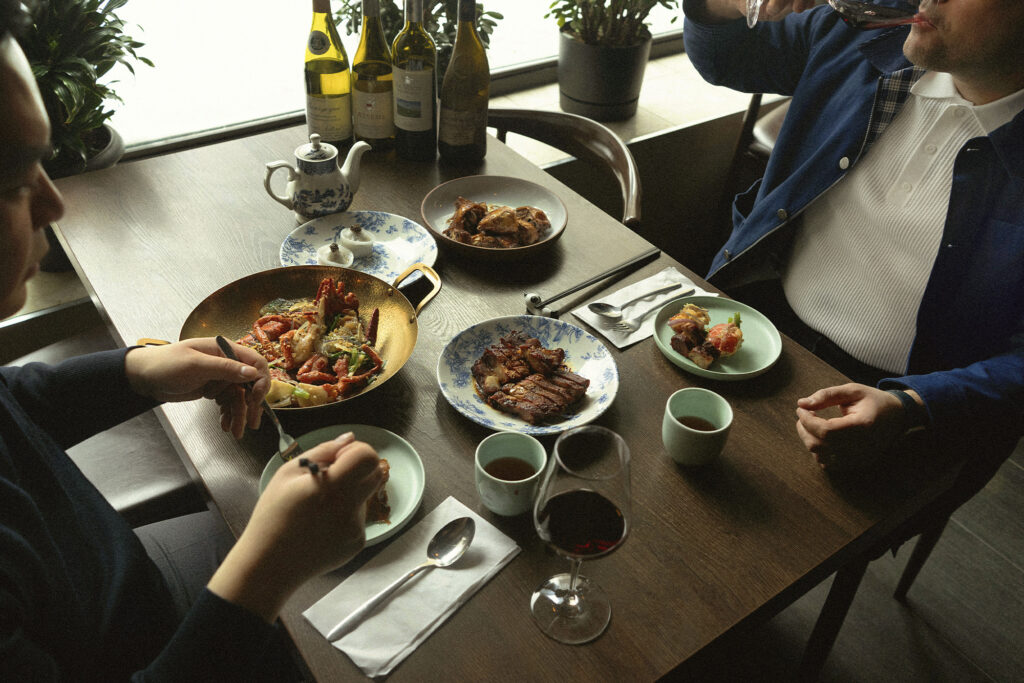
Colin: That’s the biggest thing for us. We’ve been in the city for 27 years, so how do we honour everything that got us here while also thinking about how to get to where we want to be next? We’re always evolving and listening to our customers. That’s why, in the past year, we built a new bar and added wines to our menu. […] I’ve noticed there are certain wines that pair well with Chinese food, but it hasn’t really been explored yet. I’d love to hear more about how that can be explored.
Marco: It really helps that people in the food industry love Chinese cuisine and we love wine. I think that’s been a major driving factor over the past few years. Beyond that, China’s vast culinary landscape means there are so many different flavour profiles to play with. You can literally find a dish to pair with any wine in the world.
“A lot of cuisines and a lot of influences from different cultures come together [in Toronto]. You wouldn’t think of Italian wine pairing with Chinese food, but in a city like this — it just makes sense.”
Colin Li
Colin: Why do you think the Bourgogne Chardonnay pairs well with the dumplings?
Marco: The easiest wine pairing rule to follow is: what grows together, goes together. The moment I think of Burgundy, I think of truffles. With the truffle and that nutty element in the wine, the flavours pop and come together beautifully.
Colin: I love that we get to do this. You wouldn’t historically see a slate of wines paired with Chinese food. […] I think a big reason why it’s hard to pair with Chinese cuisine is because the sauces are so dense. The flavours are so packed in there. But you were right in pairing [Attems Pinot Grigio Friuli] with the dumplings. The acidity helps cut through it, that’s the key, which is really interesting to see.
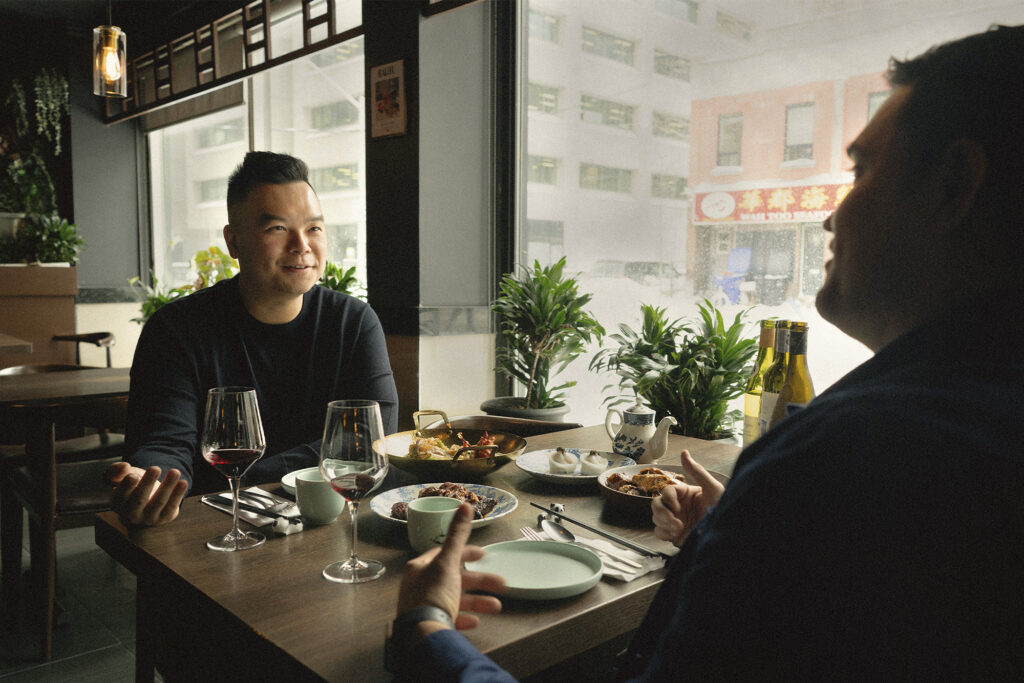
[…] When I was in China, I was trying wines actually made in China, which is interesting. There are regions in northern areas of China that are high-altitude, kind of like Italy. Those vines are a little young. But I feel like in the coming years, they’ll be really mature and the winemakers there are really learning how to play in the space.
Marco: I haven’t had a chance to try a wine made in China yet. I’ve read a lot about it, so I’m very excited to try one. It’s also fun to follow these regions from the beginning, like we got a chance to do a bit here in Niagara. Obviously, people are going to make mistakes and figure it out along the way. It’s really exciting.
Colin: Why do you think Toronto is such a good city in terms of the offerings we have at home?
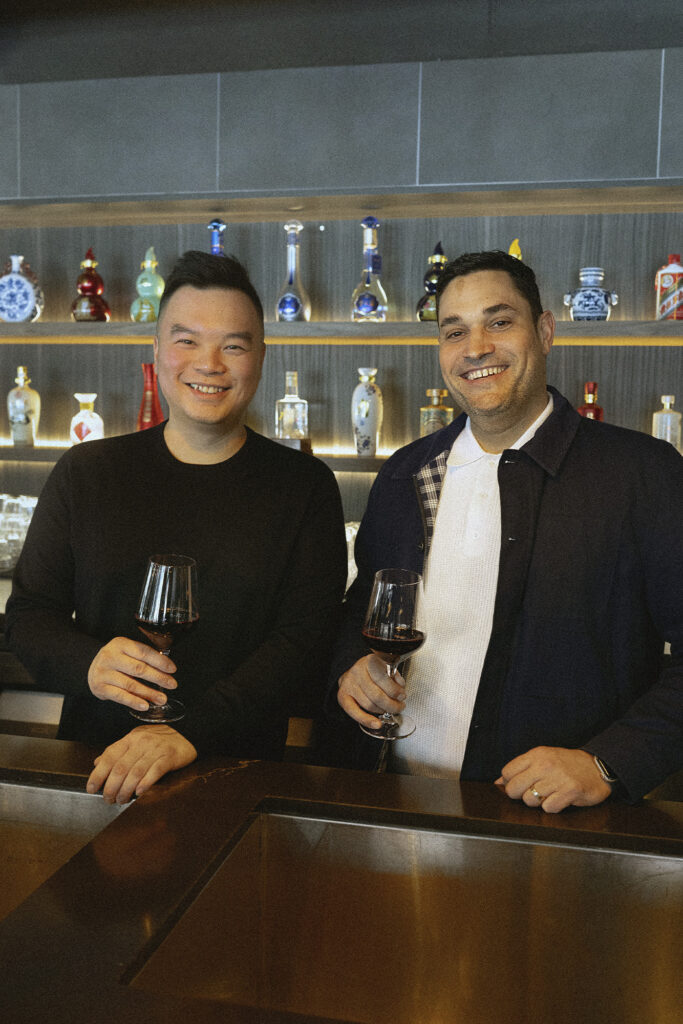
Marco: Toronto is so multicultural. I think it’s one of the few cities in the world where you can truly experience that diversity. The food and beverage scenes are exploding right now. We’re in a real moment of growth.
Colin: A lot of cuisines and a lot of influences from different cultures come together here. You wouldn’t think of Italian wine pairing with Chinese food, but in a city like this — it just makes sense.
